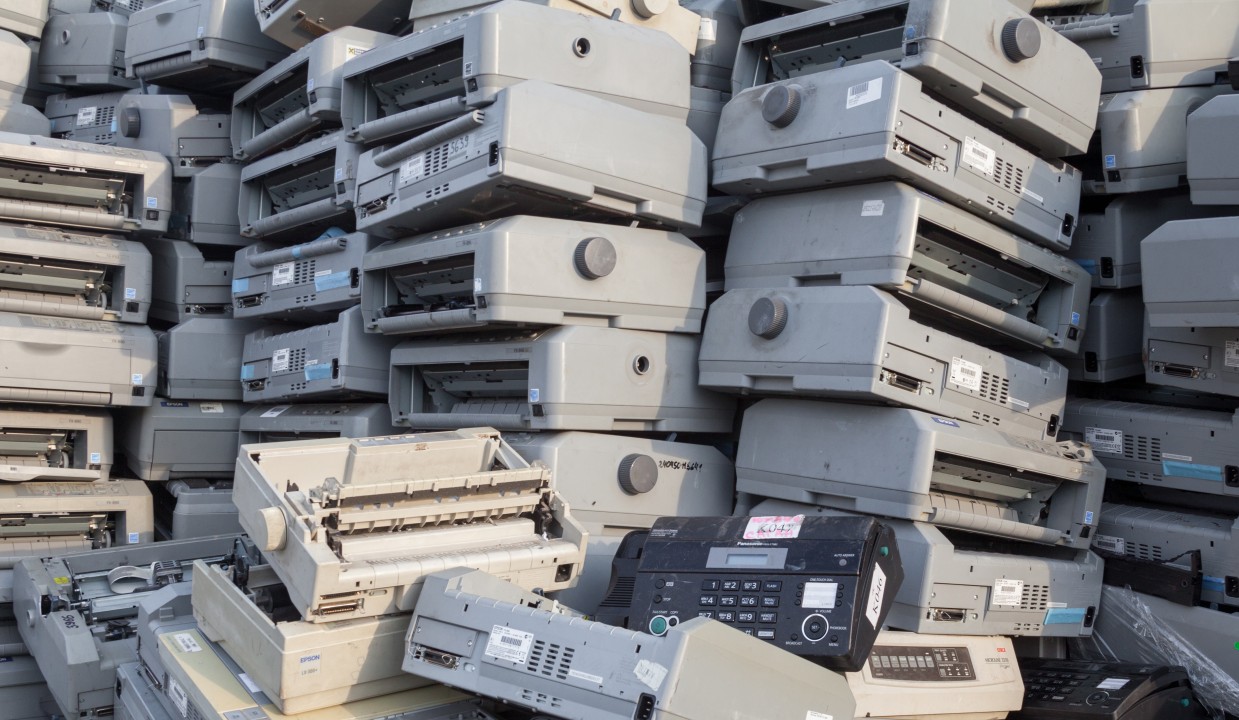Excess stock, obsolete stock, dead stock,… many terms to determine inventory that you no longer need in your company. The dictionary of APICS, a leading supply chain management association, defines “obsolete inventory” as: “… inventory that will never be used or sold at full value. Disposing of the inventory may reduce a company’s profit”.
Chances are that you are nodding right now… yes, we have some obsolete inventory in our company as well. So you might expect that I would write about processes to be put in place to avoid obsolete stock as much as possible in the future. I will do so some other time, but not today …
First clean up the old mess, then make sure not to create new mess.
Today I would rather dwell on the question: why don’t we first deal with the dead stock we currently have? After all, that is the basis for me, first clean up the old mess, then make sure not to create new mess. Compare it to your own desk, when it is neat and almost empty, it is easier to keep it tidy. If your desk is already a mess, you will continue to pile an extra book or paper here or there…
So, basics first, get rid of our obsolete stock… why is it so hard to do? As mentioned before, obsolete inventory will never be used or sold at full value. Maybe you have to find a special buyer, or you have to give big discounts to get your product sold. Maybe you still have a leftover of packaging material that you can only use for a product you no longer produce. You could ask your supplier whether you can return it at reduced price. Often, there will be no other option than scrapping the product. From whichever angle you look at it, the money you will make, will probably be less than the book value of the product, so any action to get rid of this dead stock will reduce the company’s profit. When there is a lot of shareholder pressure on profit targets, it might be tempting to postpone these actions over and over again…
However, postponement usually results in deteriorating product value even more. Let’s take an example from the food industry: it is better to sell your chicken filets at a discount of, for example, -70% just before the expiry date and thus still receive some cash, than to wait until after the expiry date and ending up paying extra money to destroy those filets. This all seems logical and yet every day I see managers “deciding not to decide” and thus to be left with dead stock. Often emotion plays a major role here: “those products are still perfectly fine, no way I’m giving a 50% discount” or “I’d rather die than have to throw that stock away, I paid so much money at the time”. Sounds familiar?
Obviously the market doesn’t want those products anymore, so I would advise to put emotions aside and to take action, because except for good wine, quality of products usually does not improve with time. On the contrary, the cost of getting rid of dead stock increases with time, so the decision to finally say goodbye, becomes increasingly difficult.
Unfortunately, I don’t have a magic wand to get rid of your obsolete inventory, but some of the following actions will help to get your obsolete inventory down:
• To better estimate financial impact, you can (gradually) write off your stock financially. For example, if you estimate that you will not be able to get a price higher than 30% of product cost, value the product in your books at that level as well. The moment you do find a buyer, financial impact will be limited, or perhaps even positive.
• Make sure your sales department has a clear overview of items that are obsolete. They must have the tools to actively sell them. Often, we have a vague idea of our dead stock, but it has not been documented sufficiently.
• Adjust sales targets of your account managers if necessary! Since there is usually little or no profit to be gained on obsolete inventory, sales people have little incentive to sell dead stock. On the contrary, they will see their margin drop, which might have a negative impact on their personal bonus. It is up to you as a manager to make sure that selling obsolete inventory is part of the sales targets.
• Contact suppliers of raw materials or packaging materials that you no longer use. They often have a better idea of possible sales channels for these materials.
• Dare to throw things away! Keeping stuff, moving them again, doing inventory counts, etc. costs a lot of money, and mostly does not outweigh the possible earnings you might be able to lay your hands on. Moreover, by throwing things away, you gain space that you can undoubtedly use for profitable products.
Do you also sense that there is obsolete inventory in your company, but you find it hard to document? Or do you have a hard time organising the actions necessary to get rid of obsolete stock, do not hesitate to contact me at tom.henderix@lemantis.ch, so we can find out together where I could support you on this.
Did you like this article? Every two weeks, I post another one on topics related to supply chain and inventory management. Don’t forget to follow me on LinkedIn if you want to stay posted!




Leave A Comment